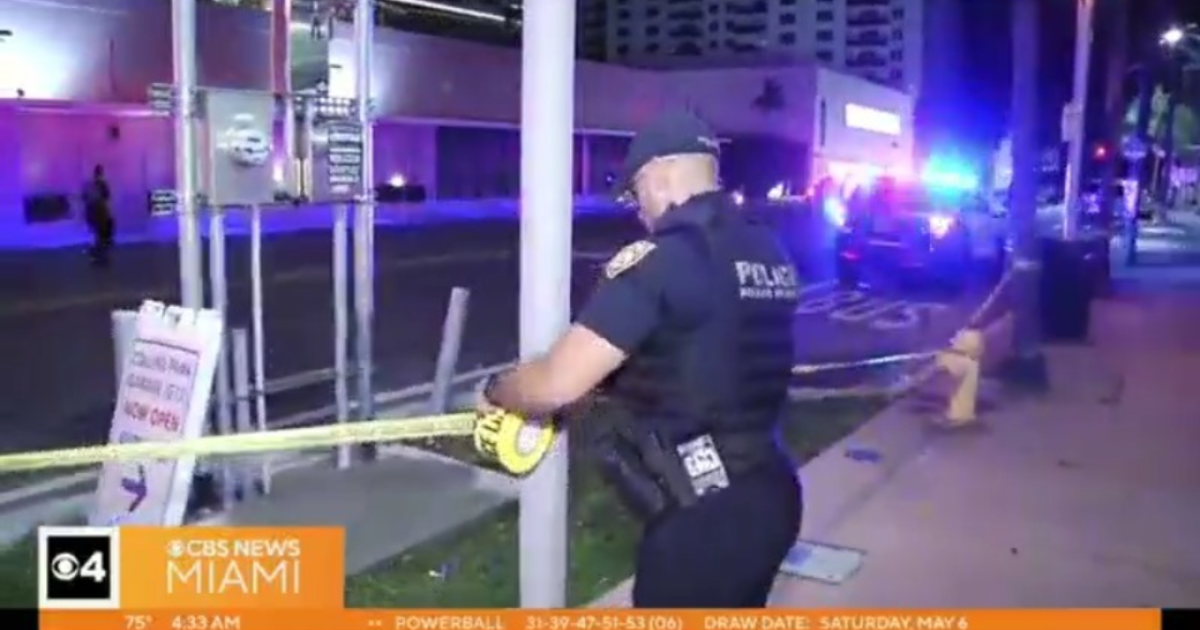I-Team: Collision Course?
It may sound like something out of the wild west or a cattle ranch. Instead, it's a government acronym that sends shivers down the spines of some airline pilots.
It is LAHSO (pronounced "Lasso") operations at airports nationwide.
LAHSO stands for "Land and Hold Short Operations" and it involves safety procedures at dozens of airports around the country where active runways cross each other.
CBS4 I-Team investigator Stephen Stock dug into thousands of pages of data to find out whether active runways that cross each other pose a danger to you when you fly.
According to the Federal Aviation Administration there are fewer than two dozen major metropolitan airports in the country where runways crossing each other raise safety concerns.
Two of those airports are located in South Florida: Miami International Airport and Fort Lauderdale Hollywood International Airport.
"The fact that you have crossing runways does not make an airport inherently unsafe," said James Mariniti, an air traffic controller.
Mariniti serves as the president and facility representative for the National Air Traffic Controllers Association in Miami.
While he insists that runways which cross each other do not inherently pose a safety danger, Mariniti admits that those airports can pose a danger if the rules aren't strictly followed by both controllers and pilots.
"There are safety issues and there are concerns and there are contingency plans," said Mariniti.
Because of those concerns, in 1997 the FAA adopted the LAHSO rules, which went into effect in the year 2000.
"LAHSO operations allow airports that have crossing runways, if they meet certain criteria, to be able to land two aircraft on two separate runways at the same time," said Mariniti.
Even with the new rules, some pilots raise safety issues with crossing runway configurations.
Internet chat rooms are filled with pilots' concerns.
And some commercial airlines and all foreign airlines will not allow their pilots to participate in LAHSO operations in America.
One pilot who voiced his concern is Ken Edwards.
"There's just a lot of other things that can go wrong in a short amount of time," said Edwards.
Edwards, who lives in Arizona, piloted for a regional commercial carrier based in South Florida, until disagreements with management over issues of safety ended with him leaving the company.
"There's layers of safety that are that are being pulled back that are being taken away that I don't think should be taken away," said Edwards.
For the first time since LAHSO was formally put into place by the FAA, the CBS4 I-Team crunched the numbers and went through the data line by line to see how often crossing runways really do pose a safety issue.
The I-Team and the Investigative unit at the CBS Evening News obtained thousands of pages of FAA reports and data that show safety incidents at seventeen major airports nationwide.
The data covers the years 2000, 2001, 2002, 2003, 2004, 2005, 2006, 2007, 2008, 2009 through the middle of 2010. The data shows that while these type of close calls are rare, they do happen because of the layout of crossed runways.
According to the FAA data, at least 190 safety incidents involving crossing runways, raised issues or concerns of safety involving moving aircraft.
Then there are real time radar images captured and sent by the FAA which show how close things can get.
In one case, one airplane on final approach to land has to go around after another plane on a crossing runway gets in the way.
In another set of radar images taken at San Francisco International Airport, one shows American Eagle flight 166 landing on runway 28L, right in front of another jet taking off on crossing runway 1L.
And another radar image shows Continental flight 1436 landing on runway 28R even while two different airplanes are simultaneously taking off on crossing runways 1L and 1R respectively.
One air traffic controller who talked to the I-Team, said this type of close call happens much more often than the public is aware.
"In my experience it's been feet," said the controller who asked to remain anonymous, for fear he'd lose his job for speaking out. "Feet."
I-Team investigator Stephen Stock asked the controller to clarify. "They've (airplanes) come within feet of hitting each other?"
"Feet," said the air traffic controller. "Feet. Where the pilots actually acknowledged on the radio (after the fact). They've come out and said, "that was close. And, it shakes you up."
According to the FAA data, the number of close calls involving crossing runways reached 80 in 2008. The data shows 61 incidents at the 17 airports in the FAA data in 2009. And the data shows 20 incidents at those same airports nationwide halfway through the year 2010.
The most incidents took place at Las Vegas' McCarran Airport which had 75 reported events from 2007 through mid-2010.
McCarran is followed, in second place by Miami International Airport which, according to the FAA data, had 25 safety issues involving the crossing runways for the two and a half year period from 2008 thru mid-2010 alone.
The problem is acknowledged by some airport designers. Airports such as Denver, Dallas, Atlanta even Miami have built more parallel runways to avoid this safety issue. However, Miami International still has one configuration where runways 27 and 30 intersect on the southeastern side of the airport
But building parallel runways remains next to impossible at airports in Chicago or New York where the airports are landlocked.
Because of that, experts say Land and Hold Short operations are likely to remain a way of life in America's aviation system for the foreseeable future.
The latest incident reported in the FAA safety data took place early last year when a commercial airline inadvertently crossed onto runway 27 just as another plane was landing onto runway 30 at Miami International Airport.
That jet had to execute what's called a "go around" to avoid colliding with the aircraft on the ground.



